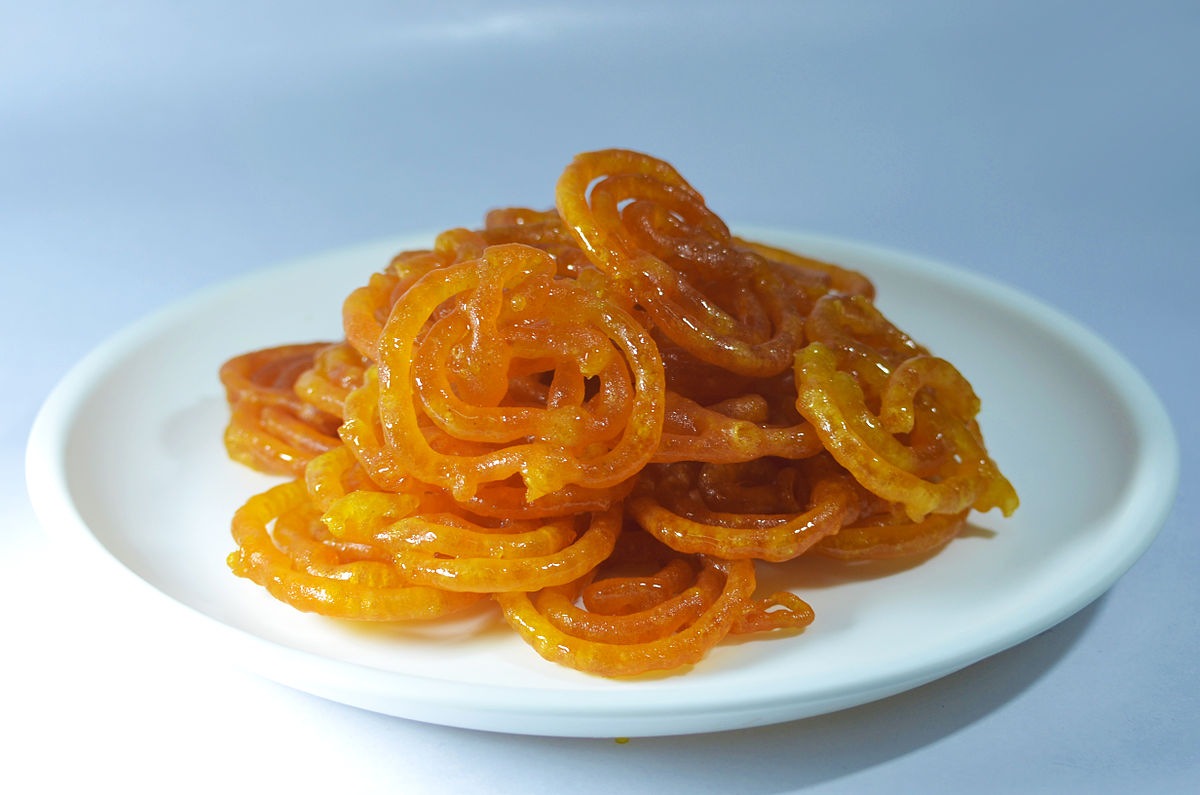Many of the sweets available in the market may be laced with harmful chemicals, synthetic ingredients, and adulterants that could pose serious health risks.
Published Sep 25, 2025 | 9:00 AM ⚊ Updated Sep 25, 2025 | 2:15 PM

Colours like metanil yellow and malachite green are sometimes added to give jalebis or laddoos a brighter, more festive hue. These dyes are not just unauthorised; they are potentially carcinogenic. (Representational image/Wikimedia)
Synopsis: Festivals are incomplete without an assortment of sweets. They come in various colours, shapes, smells, and textures, and lure customers from display windows. Multiple packets are often bought, even to gift them to dear and near ones, oblivious of the toxic ingredients that may have been used in their making.
It is festival season in India. The coming months will be exploding with joy and enthusiasm. Sweet shops will burst into life across the country with trays of colourful mithai, sugary aromas wafting through the air, and families eager to buy their favorite treats.
Laddoos, barfis, jalebis, modak, and rasgullas become central to celebrations like Ganesh Chaturthi, Deepavali, Raksha Bandhan, and Dasara. But behind this joyful indulgence lies a disturbing reality: many of these sweets may be laced with harmful chemicals, synthetic ingredients, and adulterants that could pose serious health risks.
Every year, the demand for sweets spikes during festivals. The customers also expect innovative and bright-coloured sweets. To meet this demand and maximise profits, some manufacturers and vendors take dangerous shortcuts that cost your health.
Instead of pure khoya, you might be getting a mix of starch and detergent. Instead of ghee, vanaspati laced with animal fats may be used. The dazzling silver foil that makes a sweet look festive might not be silver at all; it could be aluminum, a toxic metal linked to severe health issues. This is not speculation. Sadly, it’s a recurring nightmare that repeats every festive season.
The trendy paan barfi, topped with shiny silver foil, became a festive favorite in cities like Delhi and Mumbai. Food safety raids later revealed that many versions used aluminum vark instead of real silver. Consuming aluminum can harm the nervous system and is banned for food use.
Once, just before Deepavali, food safety authorities in Uttar Pradesh carried out surprise raids across sweet shops in cities like Agra, Kanpur, and Lucknow. Out of hundreds of samples collected, nearly 30 percent failed safety tests. Sweets that looked perfect on the outside were found to contain harmful ingredients.
In several cases, synthetic milk was being used, which is a concoction made from urea, caustic soda, starch, and even shampoo or detergent to mimic the texture and taste of real milk. This toxic brew was then turned into sweets like kalakand and rasgulla, consumed mostly by children and the elderly, who are more vulnerable to health complications.
It’s not just a case of careless manufacturing; it’s a calculated scam. When demand rises, so does greed. Vendors know that consumers are unlikely to question sweets sold in bulk during festive rushes. And with limited enforcement capabilities, many such sellers go unchecked. While FSSAI and state authorities issue warnings and conduct inspections, India’s massive and often informal food sector makes it easy for offenders to slip through the cracks.
One of the most alarming aspects is the use of non-edible textile dyes in sweets. Colours like metanil yellow and malachite green are sometimes added to give jalebis or laddoos a brighter, more festive hue. These dyes are not just unauthorised; they are potentially carcinogenic.
The sweet shop may not tell you this, and often the only way to know is if the colour is unnaturally vibrant or if the sweet leaves a stain on your fingers or tongue. Similarly, some sweets are soaked in sugar syrup and treated with washing soda to make them fluffier or last longer. Others are preserved with boric acid, a substance banned in edible products but still widely used by unregulated vendors.
What makes this situation more frightening is the lack of consumer awareness. Most people don’t know how to spot adulteration. Many trust their local sweet shop blindly, assuming that traditional sweets must be safe because they have been sold for generations. But even trusted names have failed food safety tests in the past. Unless consumers become more informed and vigilant, the cycle of deception continues.
There are ways to protect yourself and your family. Buying from a trusted, licensed vendor with an FSSAI number is one step. Sweets made fresh in front of you are often safer than pre-packed boxes that sit for days. You can try simple tests at home too.
For instance, dissolving khoya in water can reveal the presence of soap or starch, and rubbing silver foil between fingers can indicate if it’s genuine or fake. But the most secure and healthy way is to prepare sweets at home. It may take effort, but it guarantees purity and lets you choose high-quality ingredients.
This is not just a consumer issue; it’s a public health concern. The rise in food adulteration during festivals reflects deeper problems in food safety enforcement and market ethics. Every festive season, hospitals report cases of food poisoning, vomiting, and diarrhoea, many linked to contaminated sweets and milk-based products. Sadly, most go unreported or untraced, letting the culprits go free.
FSSAI has launched awareness campaigns, mobile testing vans, and helplines, but the power truly lies with the people. We need to stop blindly trusting what looks good and start questioning what we eat. You can also share verified sources, report on doubtful food items, and educate others, which can go a long way in curbing this sweet scam.
A celebration should never come at the cost of your health. Before you buy that box of sweets, take a moment to think. So, be aware, a little caution today can save you from a lot of regret tomorrow.
(Edited by Majnu Babu).
